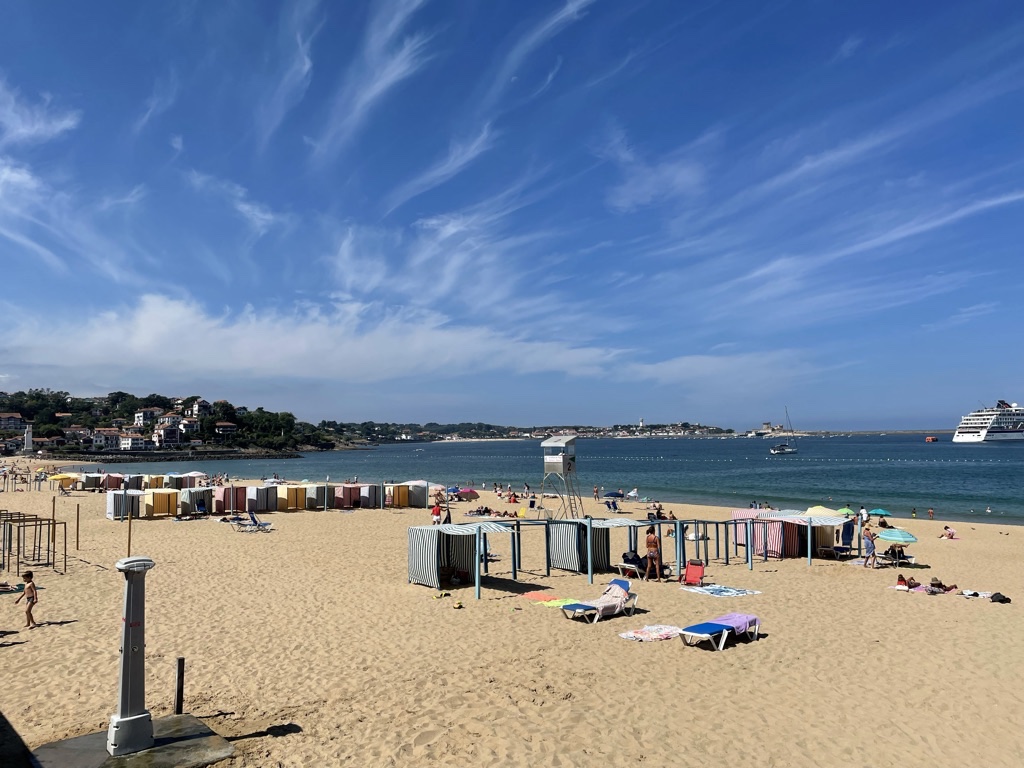
Saint Jean de Luz, a chic Basque fishing port on the Atlantic coast near the Spanish border, has a distinguished history: none other than Louis XIV was married in 1660 in its Église Saint Jean Baptiste to Maria Teresa of Spain, thus ensuring peace at last between the two countries.
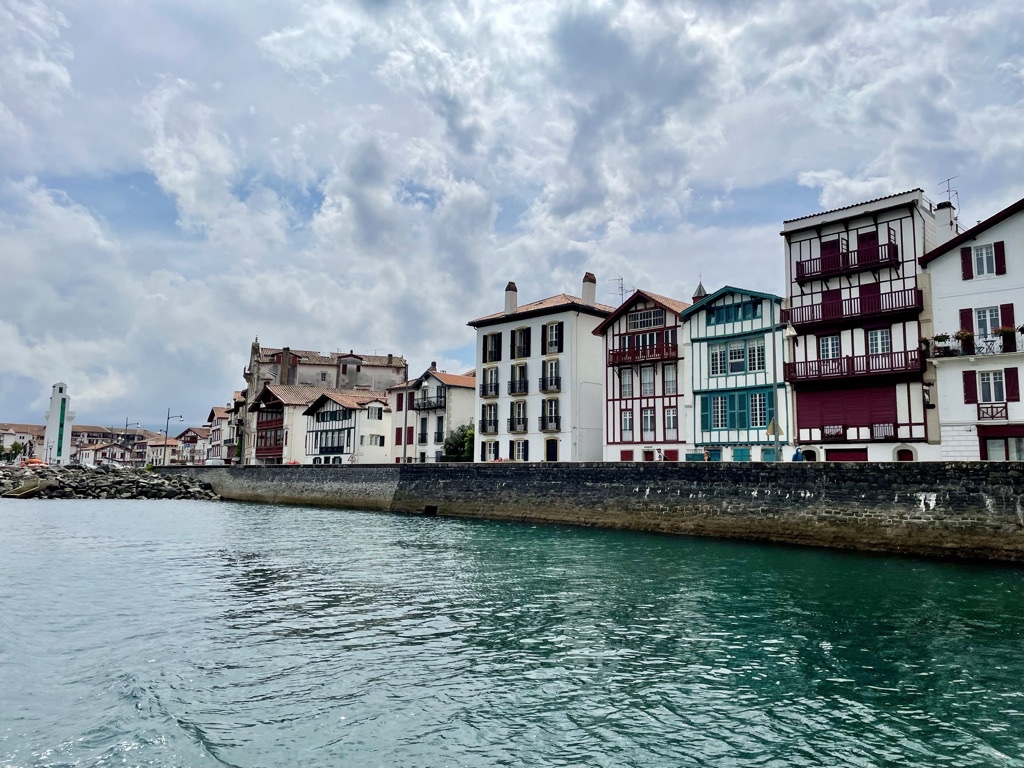
Curled around a bay with a fine sand beach, the small town (population: 14,198), with pretty white houses trimmed in red, green or blue, is the best-run beach town I have ever visited. No pets are allowed on the beach, and it is formally forbidden to turn the sand into a big ashtray by leaving snuffed cigarette butts lying around. There are even signs politely asking beachgoers to refrain from smoking (good luck with that). Open-air showers are spaced evenly along the beach, with lifeguards on duty during the day. Beach bunnies can rent deckchairs, parasols and “tents” to protect them from the wind.
The town, too, is well run, There are lots of fairly clean public toilets, and cars are banned on streets near the beach and in the shopping area. Everything is within walking distance. Plenty of hotels are conveniently located near the beach (I stayed at the rather basic two-star Hôtel Magenta, one minute from the beach).
Most of the shops – independent boutiques of all types, ranging from très chic to cheap and cheerful – are located on the intersecting Boulevard Thiers and Rue Léon Gambetta. A must-buy: the colorful striped Basque table linens, which are sold everywhere, with designer versions available at the Jean Vier Concept Store. Surprisingly and pleasingly, the same old international luxury brands usually present in such places are completely absent: no sign of Gucci, Vuitton, Hermès, Chanel, etc.
For food shopping, head to Les Halles, the covered market, open every day from 7am to 1pm, to pick up such local specialties as Ossau-Iraty cheese; piment d’Espelette, a mild local chili; and seafood, especially chipirons (baby squid).
Amazing chocolates can be had at Maison Adam, founded over three centuries ago. It’s also a good place to sample the famous gâteau Basque, plain or with black-cherry filling, and the “real” macarons invented by the original Monsieur Adam for Louis XIV’s wedding and highly appreciated by his bride Maria Theresa and her new mother-in-law, Anne of Austria.
If the beach gets boring and you’ve had your fill of shopping, there are plenty of other entertainments to be had. I was lucky to be in town during the annual Festival & Académie Ravel, held in late August and early September in honor of the town’s illustrious native son, composer Maurice Ravel (1875–1937). The public can attend concerts in Saint Jean and in nearby towns, as well as masterclasses conducted by distinguished musicians teaching at the academy.
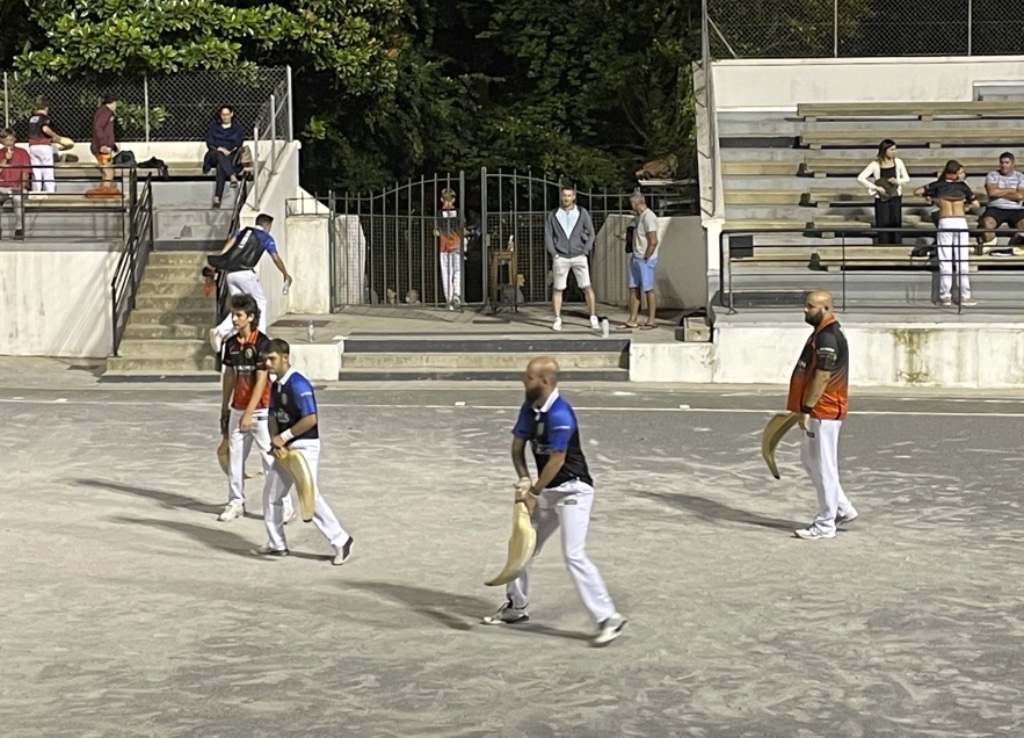
An amusing way to spend an evening with the locals is to attend a Basque pelote match at the municipal fronton (court). The game is played here with a chistera, a long, pointed basket attached to a leather glove in which the players catch the ball with a satisfying thunk. The Saint Jean matches are refreshingly low-tech, with the scorekeeper changing the numbers by hand and announcing the score in Basque and French over a microphone. He occasionally bursts into a Basque song and sometimes makes a mistake in the score, which is quickly corrected by the shouts of attentive spectators. Click here for a good description of the game in all its manifestations.
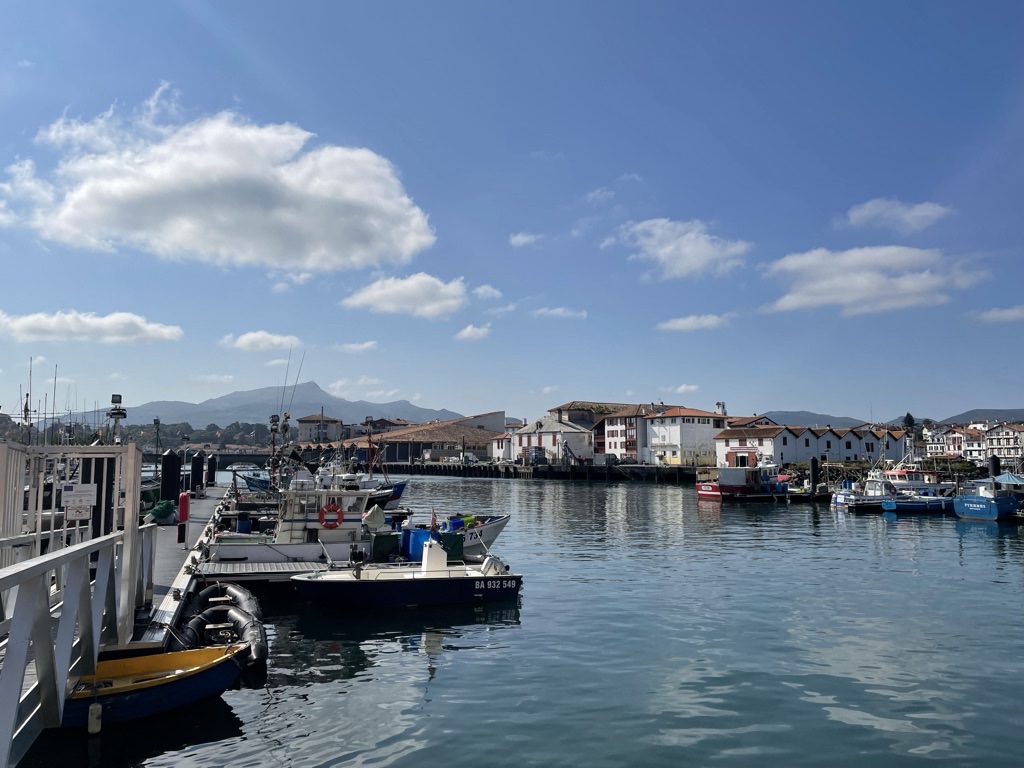
Boat tours depart from the town’s picturesque port to skim along the Spanish coast or head to Biarritz. In summer, there are sunset tours. The town’s tourism office offers a variety of walking tours.
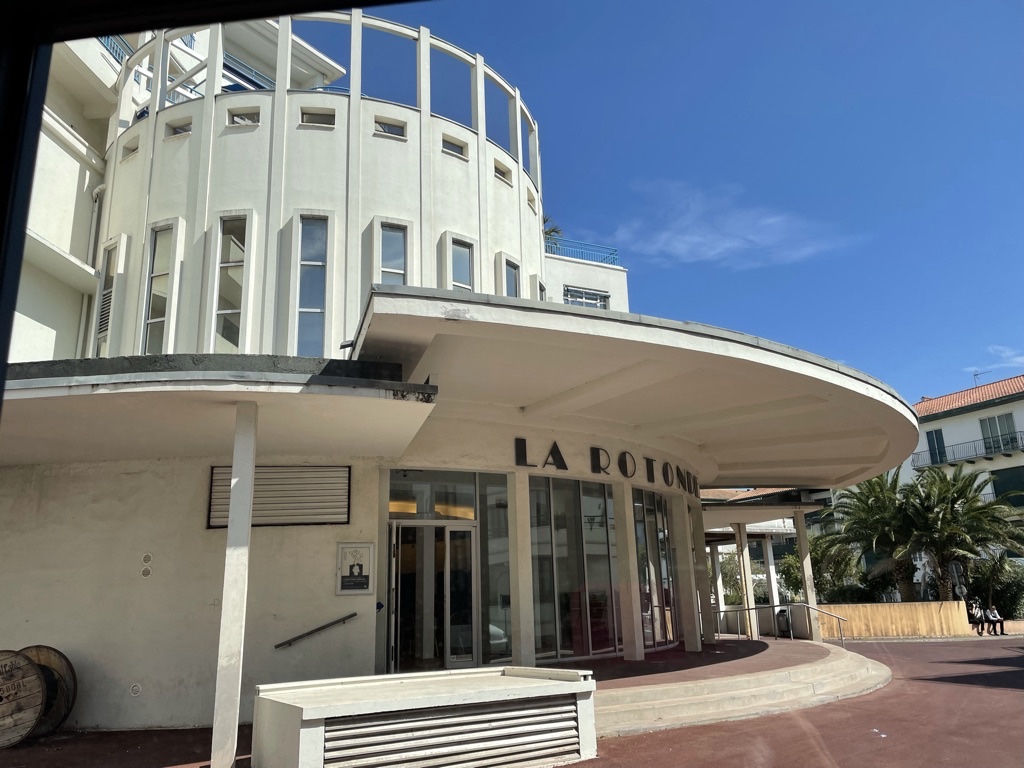
In case of rain, you can go to the movies, gamble your savings away at the casino or get a massage or beauty treatment at the Thalazur hotel and spa in the modernist La Rotonde building overlooking the beach, designed by the illustrious French architect Robert Mallet-Stevens in 1928. While it has had some unfortunate additions since it was built in the late 1920s, much of the original Art Deco architecture can still be seen.
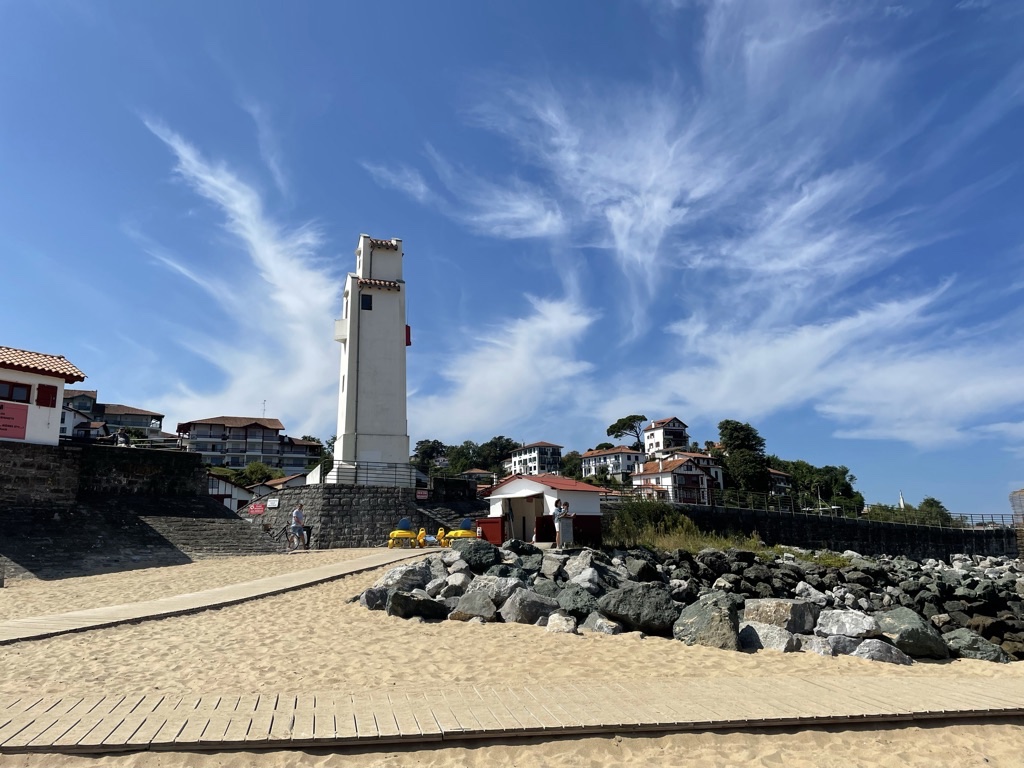
If you’re wondering about the seawalls at the entrance to the bay, they are there to protect the town from raging storms, so violent in 1782 that 40 houses were washed away, along with the Ursulines Convent. In the 25 years that followed, the town’s population decreased by two-thirds and then, in 1822, a whole quarter was wiped out. The town was brought back to life by the seawalls built by Napoleon III in the second half of the 19th century, which must be partially rebuilt every year using the same traditional methods. Soon after, Saint Jean became a popular resort.
The whole time I was in Saint Jean, I was on a mission to find great tapas. Having visited San Sebastián on the other side of the Spanish border a couple of years ago, I craved a similar wide selection of inventive, high-class pintxos, but all I could find were a few places serving classic Spanish-style tapas of no particular note.

The best eateries I found were a one-man pizzeria (be prepared to wait) called Aupa (3, rue Jean Bague; 06 25 39 38 23), where I had one of the most memorable pizzas of my life, made by the Basque owner (the assistant who takes over on his day off is not nearly as talented), and at Le Garage, a kind of cool food court in a former garage, where I had some very tasty homemade Mexican food at El Taco Del Diablo and a delicious new type of French street food at Blandice, inventors of a portable dish called a “lingot” (ingot) made of a cross between waffle and bread dough, with various fillings heaped inside.
France has some tacky modern beach towns, but Saint Jean de Luz is not one of them. The “Luz” in its name may mean “swamp,” in reference to the town’s muddy past before the seawalls were built, but the swamp was drained long ago, leaving the way open for happy holidaymakers.
Favorite